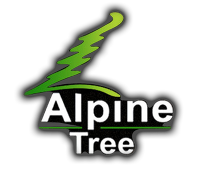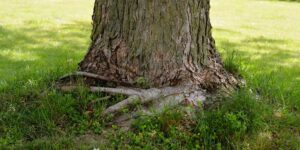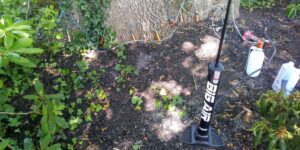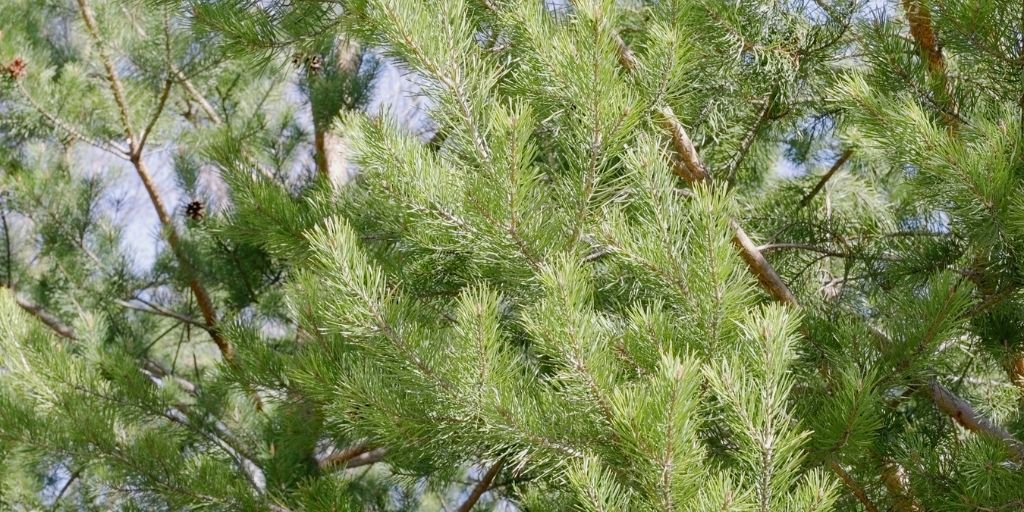Have you noticed the tops of your pine trees looking wilted or brown? Unfortunately, this could be the first sign of an attack by one of the most destructive pests targeting conifers in North America – the white pine weevil. This pest is notorious for attacking and seriously damaging pine and spruce trees across the country, including our own backyard in Morristown, NJ.
This article will arm you with important knowledge about identifying, controlling, and preventing white pine weevil infestations so you can protect your pine trees from this pervasive pest.
What Is the White Pine Weevil?
The white pine weevil (Pissodes strobi) is a beetle notorious for its damaging impact on conifer trees, especially eastern white pines and spruces. This beetle is notorious for its damaging impact on young and ornamental trees, where it prefers to attack the terminal leader or the uppermost part of the tree, causing the new growth to wilt and die, as well as creating unsightly deformities and potentially stunting the tree’s growth.

On the left, a close-up photo of a white pine weevil. Image courtesy of A. Steven Munson, USDA Forest Service, Bugwood.org. On the right, image of white pine weevil damage courtesy of Steven Katovich, Bugwood.org.
Life Cycle: When Your Pines Are Most at Risk
Timing is critical when it comes to the weevil’s life cycle and the risk of infestation. In early spring, as temperatures rise, adult weevils emerge from overwintering and ascend the trees. This usually happens in April in central New Jersey. The adults feed on the tender bark of new shoots and lay eggs in the leaders. Once hatched, the larvae burrow deep into the woody stem, disrupting vital nutrient and water flows that keep the terminal growth alive.
By late summer, the larvae pupate within the tree, and a new generation of adults emerges to descend and overwinter in preparation for next year’s cycle. This means the highest risk period is in early-to-mid spring when the adults are actively laying eggs. Vigilance during this phase is crucial for early detection and intervention before damage occurs.
Identifying the White Pine Weevil
Identifying a white pine weevil infestation involves looking for specific signs that typically appear on susceptible trees, particularly in late spring. Although the white pine weevil is known for primarily targeting eastern white pine, it does not limit its activity to white pines alone; spruce trees are also commonly affected, especially species like Norway spruce (Picea abies), which is also commonly planted and grown in New Jersey.
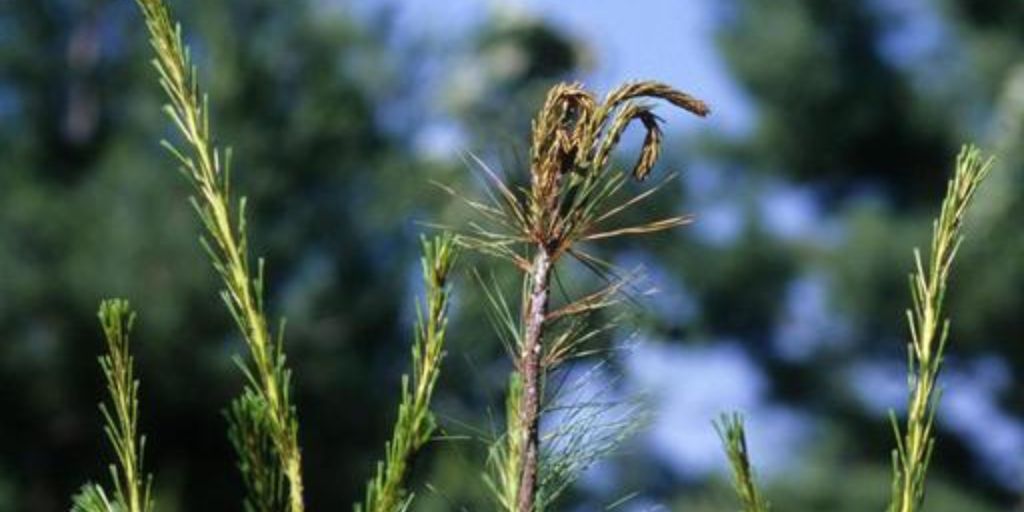
Signs of white pine weevil damage in the terminal of an infested eastern white pine. Image courtesy of Steven Katovich, Bugwood.org.
Common Signs of Infestation
- Wilting New Growth: The most conspicuous sign is the wilting of the new growth at the tops of the trees. This typically becomes evident in late spring.
- Shepherd’s Crook: Infested terminals often bend over and form a characteristic shepherd’s crook shape.
- Resin Flow: You may notice resin flowing from feeding punctures on the leader stem. This is a tree’s response to the weevil’s attack.
- Visible Holes: Small, round holes created by adult weevils may be visible on the bark of the terminal leader.
When Signs of Infestation Appear
These signs of weevil infestation usually become apparent in late spring. This timing is critical for management strategies, as interventions are most effective when applied shortly after these signs emerge.
Identifying these signs early can significantly impact the management and control of white pine weevil infestations, protecting your trees from severe damage.
Why Your Pine Trees Are at Risk in New Jersey
Pine trees in New Jersey are particularly susceptible to the white pine weevil for several reasons related to local climate and landscaping practices.
White Pine Weevils Like Our Climate
The moderate climate of New Jersey, with its cold winters and warm summers, creates an ideal environment for the white pine weevil. These pests become active in early spring as temperatures rise, coinciding with the time when pine trees begin their new growth phase.
Landscaping Practices Invite in Weevils
Common landscaping practices can inadvertently increase the vulnerability of pine trees to weevil infestation. For example, planting pine trees in open, sunny areas makes them more attractive to female weevils looking for sites to lay their eggs. Similarly, trees that are stressed due to improper planting, inadequate watering, or injury are more likely to attract weevils.
These Pests Prefer Trees Common in NJ
The white pine weevil shows a strong preference for certain types of pine trees, such as Eastern White Pine (Pinus strobus), as well as spruce trees like Norway spruce (Picea abies). It can also be found on Scotch pine (Pinus sylvestris), Siberian spruce, Colorado blue spruce, and Douglas-fir. Landscape choices that favor these species can inadvertently increase the risk of infestation.

White pine weevil exit holes on an eastern white pine. Image courtesy of Steven Katovich, Bugwood.org.
White Pine Weevil Management and Control Options
Controlling the white pine weevil requires a multifaceted approach that involves both preventive and reactive measures. The effectiveness of a particular treatment varies based on the timing and method of application. Here are the key strategies:
Promptly Remove Infested Leaders
Infested leaders (the main upward-growing branch at the top of the tree) should be pruned and destroyed before larvae mature and emerge as adult weevils. This typically means cutting off the leader in late winter or early spring, before new growth begins.
- Effectiveness: High, as it directly removes the next generation of pests.
- Recommended for: Arborists, due to the need for proper identification and pruning techniques to avoid further stress to the tree.
Apply Chemical Treatments at the Right Time
Insecticide sprays can be applied in early spring, targeting adult weevils before they lay eggs. The specific timing should align with the weevil’s life cycle, which is often determined by degree-day models. In Morris County and surrounding areas, this typically occurs in April.
- Effectiveness: Moderate to high, depending on the timing and the specific product used.
- Recommended for: Both homeowners and arborists, although professional application ensures the correct usage and safety measures.
Use Good Cultural Practices
Planting resistant tree species and ensuring optimal tree health through proper nutrition and watering can reduce the likelihood of infestation. Regular monitoring for early signs of damage is also crucial.
- Effectiveness: Moderate, as these measures don’t directly kill the weevil but make the environment less conducive to its survival.
- Recommended for: Homeowners, with guidance and additional support from arborists as needed.
Have a Professional Tree Health Assessment
Regular tree health assessments by a certified arborist can help identify potential vulnerabilities to weevil damage and other health issues. Arborists recommend assessments every three years or after significant stress events like droughts or heavy storms.
- Effectiveness: High, as early detection leads to timely and effective intervention.
- Recommended for: Arborists, due to their expertise in diagnosing and treating tree health problems.
Implementing these control measures at the right time and with the proper expertise is essential for their success. While some actions can be performed by informed homeowners, consulting with or hiring an arborist for more complex tasks ensures that your trees receive the best care possible.
PRO TIP: Consistent care and monitoring throughout the year are key to preventing white pine weevil damage.
Preventive Measures Against White Pine Weevil Infestations
To safeguard your trees from the white pine weevil, prevention is always better than cure. Here are practical steps you can take to help deter weevils from attacking your pines:
Select Resistant Tree Varieties
While no tree is completely immune, some species are less attractive to the white pine weevil. In New Jersey, spruce trees and jack pine tend to recover better from weevil damage than white pine. Larger trees, including white pines, that reach a height of 20 feet or more are more tolerant of the white pine weevil.
Use Proper Planting Techniques
Ensuring trees are planted correctly can also deter weevil infestations. Plant trees in well-drained soil and avoid overcrowding, as stressed trees are more susceptible to pests. Providing the right growing conditions from the outset can promote stronger, more resilient trees.
Increase Tree Diversity
Planting a mix of tree species can reduce overall vulnerability to the white pine weevil. Additionally, overtopping hardwoods or conifers can protect young pine and spruce from weevil damage by reducing the likelihood of the leader becoming an optimal egg-laying site for the weevils.
Monitor Your Pines Regularly
Keep an eye on your trees for early signs of infestation, especially in spring. Certified arborists can also conduct regular inspections to identify any early signs of weevil activity or other health issues.
Proactive measures such as these, as well as early intervention, are key to preventing white pine weevil damage and ensuring the long-term health and beauty of your trees.
Protect Your Pines – Call Alpine Tree Today!
Choosing Alpine Tree for your tree care needs means partnering with a team of dedicated experts who specialize in the diagnosis, control, and prevention of pests like the white pine weevil. Our certified arborists possess the knowledge and experience to identify the early signs of infestation, apply effective control measures, and recommend preventive strategies tailored to your specific landscape.
Don’t let white pine weevils take a toll on your pines. Call us today at 973-964-7798 for a consultation and let us help you keep your trees healthy, safe, and vibrant.
Featured image courtesy of Steven Katovich, Bugwood.org.
